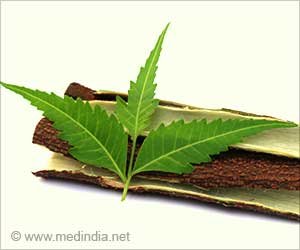Willow Bark Offers Next Generation Anti-Viral Drugs

“We need broadly acting and efficient tools to combat the virus load in our everyday life,” said Prof Varpu Marjomki. “Vaccinations are important, but they cannot deal with many of the newly emerging serotypes early enough to be effective on their own.”
The scientists had previously tested willow bark extract on enteroviruses, and found it was highly successful: in this new study, they expanded the remit of their research to look at additional kinds of virus and to try to understand the mechanism of the extract’s action.
Advertisement
To make the extract, they harvested commercially grown willow branches. The bark was cut into pieces, frozen, ground, and then extracted using hot water. This produced the extract samples which the scientists tested against enteroviruses strains of Coxsackievirus A and B and coronaviruses a seasonal coronavirus and COVID-19.
The scientists used a cytopathic effect inhibition assay to see how long the extract took to act on infected cells and how well it inhibited viral activity. The extract did not harm the cells themselves and efficiently protected cells from infection. A binding assay carried out on the COVID-19 samples further showed that although this virus could enter cells even if treated with the extract, it couldn’t reproduce once it was inside.
The authors had previously found that the extract was effective against enteroviruses, which meant it could act against two differently structured types of virus, enveloped and non-enveloped. However, the mechanism of action appeared to be very different, because treated enteroviruses couldn’t enter cells.
The scientists then experimented with the timing of the addition of the extract to see if the extract attacked particular stages of the virus life cycle. They found that the extract seemed to act on the surface of the virus, rather than any given stage of its replication cycle.
They also examined the treated virus under the microscope to understand the effects of the extract better. Both viruses clustered together instead of spreading out, but the enveloped coronaviruses appeared to have been broken down, while the non-enveloped enteroviruses appeared to have been locked down, prevented from releasing their genome and reproducing.
“The extracts acted through distinct mechanisms against different viruses,” said Marjomki. “But the extracts were equally effective in inhibiting the enveloped as well as non-enveloped viruses.”
The authors also tested existing medical compounds derived from willow bark, as well as commercially prepared salixin extract and salixin powder. Of these, only the salixin extract showed antiviral activity, suggesting that the success of the scientists’ willow bark extract could result from the interactions of different bioactive compounds.
The scientists fractionated their extract to understand its chemical composition but didn’t get clear answers as to which of the many effective compounds might be primarily responsible for the antiviral effect. Further research will be needed to understand the bioactive compounds involved, their chemical structure, and how they work, potentially leading to revolutionary new antiviral treatments.
“We are presently continuing fractionations and bioactive molecule identification from willow bark extracts,” said Marjomki. “This will give us a number of identified pure molecules which we can study in further detail. Also, we will study a larger number of viruses with purified components. Purified components will give us better opportunities to study their mechanisms of action.”
Reference :
- Could willow bark provide our next life-saving antiviral medicine? – (https://blog.frontiersin.org/2023/11/08/could-willow-bark-provide-our-next-life-saving-antiviral-medicine/)
Source: Eurekalert
Source link
#Willow #Bark #Offers #Generation #AntiViral #Drugs



